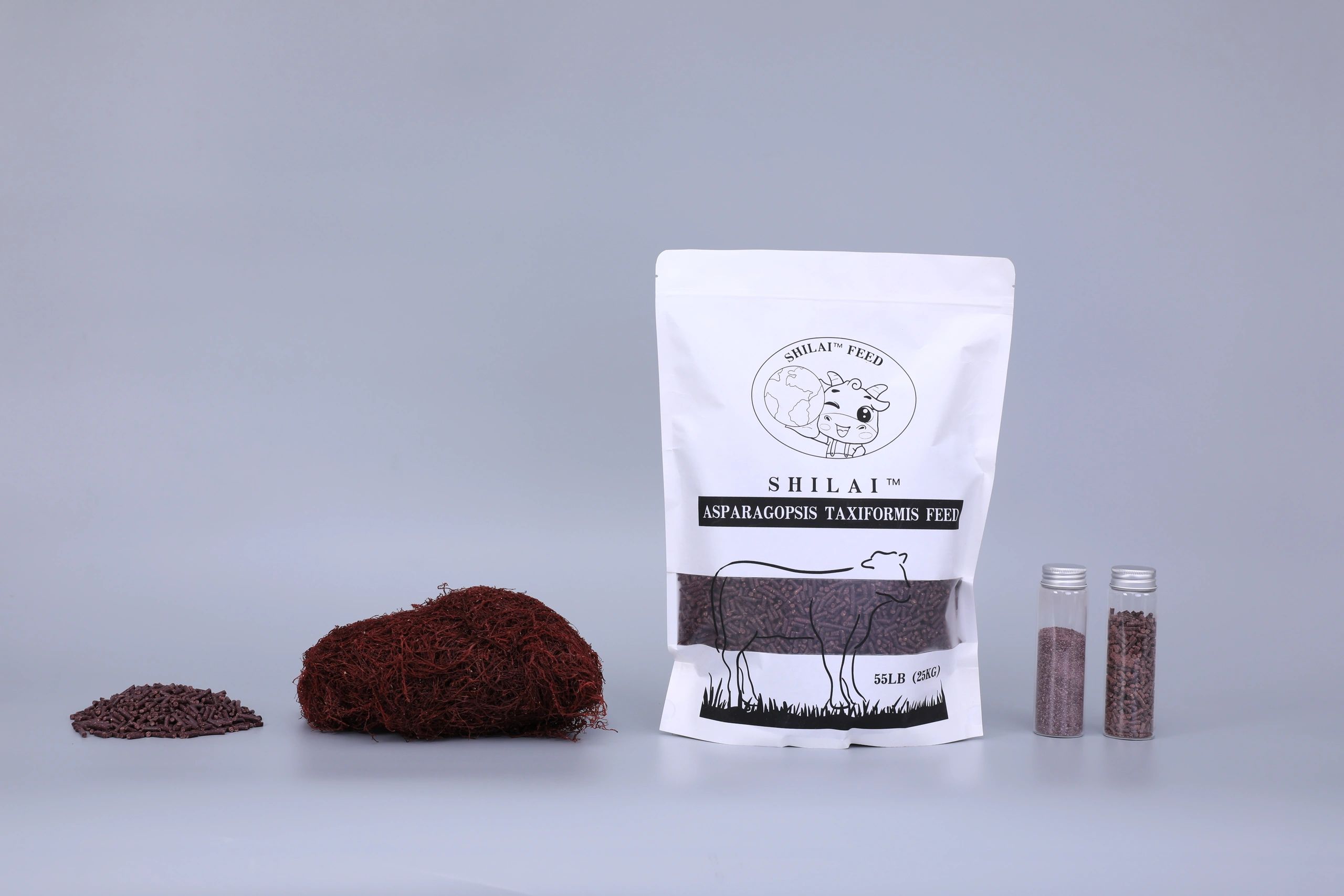
Global farming activities are responsible for a large share of greenhouse gas outputs, driven mainly by animal production.
Methane is a powerful greenhouse gas that has a much higher warming potential than carbon dioxide, posing urgent climate risks.
Scientists are exploring the use of Asparagopsis taxiformis, a red algae species, as a novel approach to mitigate livestock methane.
The seaweed’s active substance disrupts microbial methane production in the rumen, cutting animals’ methane emissions.
Feeding Asparagopsis taxiformis to animals has produced trial outcomes that support its potential as a real-world methane mitigation tool.
- Additionally, Asparagopsis taxiformis provides further value propositions alongside emissions reductions.
- Enhanced nutritional value for livestock
- Potential to create a sustainable and circular economy in the agricultural sector
Additional scientific and practical work is necessary, but Asparagopsis taxiformis stands out as a promising pathway to greener livestock production.
Realizing the Opportunity of Asparagopsis taxiformis Powder in Animal Nutrition
The powder and extract forms of Asparagopsis taxiformis could deliver new nutritional and environmental value in feeds.
The species supplies both nutritional elements and bioactives that contribute to enhanced livestock performance.
Employing A. taxiformis powder in feed mixes has achieved methane declines in trials and may improve micronutrient profiles.
Sustained R&D is needed to finalize dosage regimes, processing protocols, and long-term performance and safety evidence.
How Asparagopsis taxiformis Could Reshape Sustainable Animal Agriculture
The crimson alga is attracting interest for its potential to tackle environmental challenges arising from traditional livestock systems.
Incorporating the seaweed into diets can translate into concrete methane cuts and improved sustainability outcomes on farms.
Evidence shows Asparagopsis can have positive impacts on animal health and productivity alongside emissions reductions.
Additional long-range research and deployment studies are needed, but current trial outcomes are optimistic.
Asparagopsis as a Dietary Strategy to Lower Methane
The seaweed has surfaced as a practical strategy to reduce enteric methane from cattle, sheep, and goats.
Active substances in the algae modify rumen microbial dynamics, thereby reducing methane production.
- Published experiments indicate that Asparagopsis supplementation can substantially lower methane emissions in ruminants.
- The use of Asparagopsis as a feed additive is considered an environmentally sustainable approach to methane mitigation.
- Many producers are investigating the feasibility of integrating Asparagopsis into routine feeding practices.
Asparagopsis: The Marine Ingredient Shaping Sustainable Livestock Systems
From ocean science to farm practice, Asparagopsis taxiformis is an emerging contender for sustainable methane mitigation.
- Feeding trials with Asparagopsis demonstrated substantial methane declines, supporting its environmental promise.
- The development offers a hopeful route to balance food security and environmental protection through methane mitigation.

As the world pursues practical climate actions, Asparagopsis appears as a unique and deployable option to mitigate enteric methane.
Advancing Optimization of Methane-Cut Feeds Based on Asparagopsis taxiformis
Studies concentrate on ideal handling, formulation, and application rates to make A. taxiformis-based feeds most effective.
The Science Behind Asparagopsis taxiformis's Methane-Lowering Effects
Scientists attribute the effect to Asparagopsis compounds that impair the methanogenesis process in the rumen.
The compound bromoform within the seaweed is a principal inhibitory agent against methanogenesis, and researchers are studying its dynamics and safety.
Adding Asparagopsis into Rations to Support Sustainable Livestock Systems
A. taxiformis can be formulated into feeds to deliver both nutritional benefits and methane reduction properties.
Asparagopsis integration may improve nutrient density, digestive efficiency, and deliver ancillary antimicrobial or immunomodulatory effects.
Asparagopsis taxiformis as a Nature-Based Path to Greener Food Production
Asparagopsis taxiformis could play a role in reshaping food systems by reducing emissions and enhancing environmental performance.
- Moreover, adding Asparagopsis can boost the micronutrient and bioactive content of animal feeds.
- Experts across sectors are mobilizing to research Asparagopsis applications in both marine and land-based food systems.
Mainstreaming Asparagopsis use has the potential to achieve measurable reductions in the environmental effects of livestock agriculture.
How Asparagopsis Feed Additives Can Improve Animal Health and Performance
Asparagopsis is attracting interest as a supplement that can lower methane and concurrently bolster animal health and efficiency.
Studies report improvements in nutrient uptake and feed efficiency when Asparagopsis is integrated into rations, aiding growth.
Supplementation may confer antioxidant or immune benefits that bolster animal defenses and reduce susceptibility to illness.
Growing market and regulatory interest in emissions reduction underscores the potential role for Asparagopsis as development continues.
Methane-Cut Feed with Asparagopsis: Towards a Carbon Neutral Future
As agriculture confronts demands for lower emissions, Asparagopsis emerges as a tangible tool to help reduce methane burdens.
- Researchers identify the algae’s bioactives as agents that hinder methanogenic activity in the rumen, decreasing methane formation.
- Studies and trials consistently report significant methane reductions from Asparagopsis inclusion under controlled conditions.
Beyond being a lower-emission feed choice, the approach could help reorient food production to align with climate resilience goals.